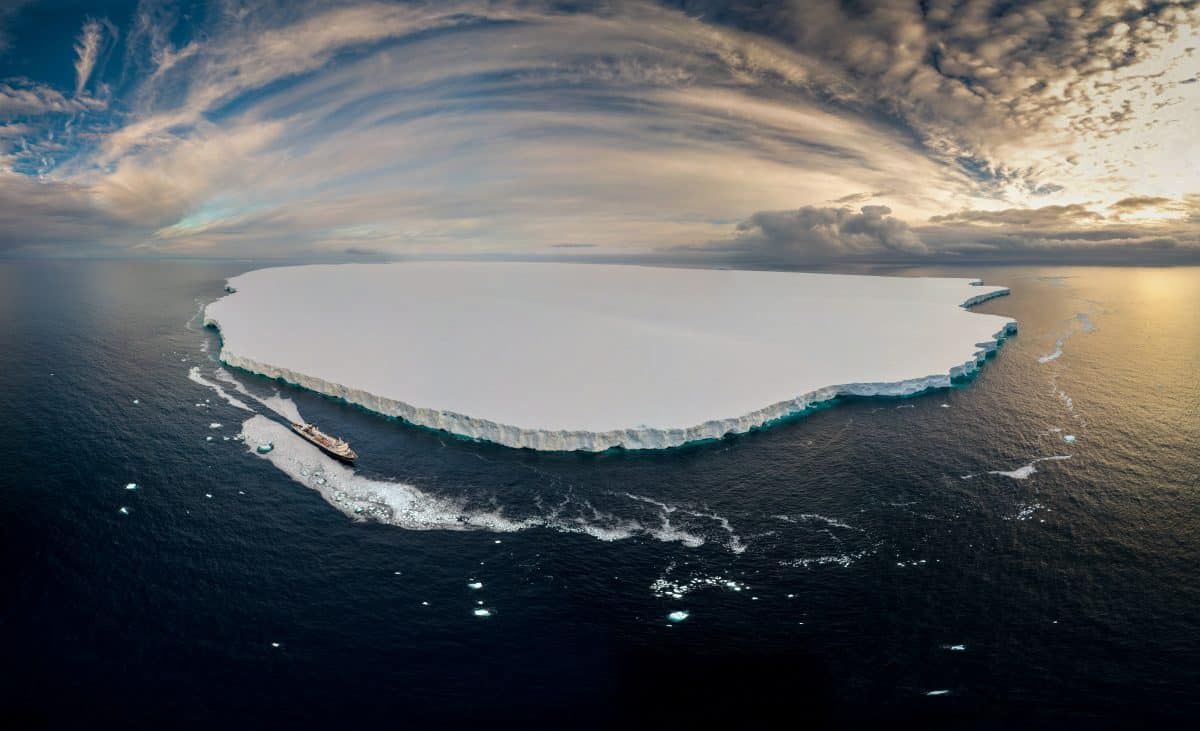
credit;SWNS - stock image
The massive Greenland ice sheet is melting faster than previously feared – threatening coastal cities around the world, according to new research.
Thick, impenetrable slabs are expanding so rapidly on the interior the run-off area has increased by 26 per cent since 2001.
They span miles with low permeability meaning surface water is not re-absorbed by porous snow that acts as a buffer.
It could contribute an extra three inches to sea level rise by the end of the century, say scientists.
Lead author Dr Mike MacFerrin, of Colorado University, said: “Even under moderate climate projections, ice slabs could double the size of the run-off zone by 2100.
“Under higher emissions scenarios, the run-off zone nearly triples in size.”
The ice sheet is seven times the size of the UK and nearly two miles thick in places. If the whole thing melted it would raise sea levels worldwide by 23 feet – flooding most of the world’s coastal cities.
Even a small increase in the coming decades could devastate the lives of millions of people in low-lying areas.
Bangladesh, Florida and eastern England are among many areas known to be particularly vulnerable to rises in sea level over the course of the century.
The slabs – up to 50 feet thick – form over many years when melt-water refreezes between existing layers of ice.
Dr MacFerrin and colleagues predicted their potential effect on meltwater run-off.
Under a higher emissions scenario with greater release of greenhouse gases the zone would enlarge by the size of Texas – raising sea surfaces by up to 2.9 inches.
This is in addition to large chunks of ice breaking off Greenland’s glaciers and falling into the ocean.
From 2001 and 2013 ice slabs expanded the run-off zone by about 40,000 square miles – an average pace of two American football fields a minute.
The study published in Nature found even under a moderate emissions scenario the phenomenon could raise seas by over an inch extra.
As extreme Arctic melting events become more frequent delicate ice layers expand and solidify into the mammoth slabs – creating an impermeable shell.
Meltwater can no longer percolate down into the ice sheet and instead flows downhill along the ice slabs – eventually into the ocean.
In July 2012 snow and ice melted from 97 percent of the ice sheet’s surface – an event not seen in the 33-year satellite record.
This spring, which was particularly warm and sunny, a record-setting 80 billion tons of Greenland ice melted.
The team stumbled on the slabs in 2012 when they found large sections of solid ice in core samples. They’d never seen anything like it before.
Now they’ve driven snowmobiles across southwest Greenland – dragging ground-penetrating radars behind to map their extent.
The scientists also harnessed NASA Icebridge data and climate models to understand how they have expanded in recent decades – and will continue to grow.
Co-author Dr Mahsa Moussavi, also at Colorado, said: “As the climate continues to warm these ice slabs will continue to grow and enhance other meltwater feedbacks.
“It’s a snowball effect – more melting creates more ice slabs, which create more melting, which, creates again more ice slabs.”
This process fundamentally alters the ice sheet’s present and future hydrology. Arctic feedbacks like this are critical to understand because they show just how much, and how quickly, a warming climate can change Earth’s most vulnerable regions.
Second author Dr Horst Machguth, of Fribourg University in Switzerland, said: “Interestingly, decades ago scientists hypothesised what meltwater in a warming climate could do to Greenland’s snow layers, based on measurements and theory.
“Our results show their hypotheses were close to what is playing out in Greenland today.”
The climate mitigation path the world follows will determine how much the slabs will contribute to sea level in decades to come – from a couple millimeters to a few inches.
Dr MacFerrin said: “Humans have a choice about which way this goes.”
Earlier this year Professor Peter Wadhams, of the University of Cambridge, who has led 55 expeditions to the region, compared flowing melt water to the “Niagara Falls”.
Speaking from near the settlement of Kangerlussuaq where Dr Macferrin’s team was based, he said there had been “large changes” to the area since his last visit five years ago.
The professor, who first visited the Arctic in 1969, said: “It’s certainly a far more rapid rate of ice loss going on now than at any time in the past.
“The rate of global sea level rise is really completely dependent now on the loss from the Greenland ice sheet, that’s going to be going up quite rapidly.
“The first time I was here 30 years ago, there was never any melt from the Greenland ice sheet even in summer.”
According to the World Meteorological Organisation (WMO), July 2019 had at least equalled and possibly exceeded the record for the hottest month in history.
It followed data showing the world had experienced the warmest June on record.
Belgium, Germany, Luxembourg, the Netherlands and the UK all saw new national temperature records on 25 July.
The Met Office said it took a recording of 38.7C at Cambridge Botanic Garden, officially the highest temperature recorded in the UK.